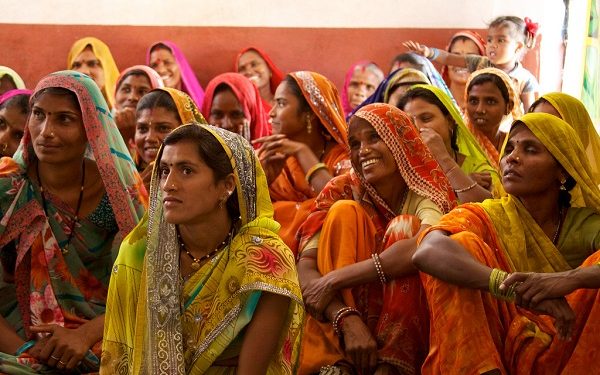According to the Brookings Institute report, titled “The Promise of Impact Investing in India”, India faces a financial gap of around $564 billion for achieving the sustainable development goals (SDGs) by 2030. The report also mentions that in a survey of social enterprises, 57% identified access to debt or equity as a barrier to growth. Impact Investment in India stood at USD 5.2 billion from 2010 to 2016, according to a report of McKinsey. This growth was spurred by the initial success of investments in Micro Finance sector a decade ago. As innovation continued in the segment of social sector funding, instruments like “Pay for Success” model in the form of Social Impact Bond (SIB) and Development Impact Bond (DIB) also emerged. The world’s first DIB was launched in 2015 in India, called “Educate Girls” to improve learning outcomes and enrolment numbers for out-of-school girls. It targeted 18,260 school-going children in the Bhilwara district of Rajasthan. Later, philanthropic foundations including Tata Trust announced a DIB, to improve the education outcome of 3 lakh students in Delhi & Gujarat. To encourage growth of innovative impact finance models, a level of government focus is required. To overcome the social challenges and to encourage social enterprises, India needs to ensure that sufficient capital is invested in creating a positive impact on society. However, these organizations need appropriate legal forms to be freed from constraints in generating revenue on a sustainable basis (while still being able to pursue their social missions) and also strong policy and regulatory support.
Taking a step in this direction, the Union Budget of India for 2019-20, proposes setting up a Social Stock Exchange. The Social Stock Exchange (SSE) aims to allow social enterprises and voluntary organisations with a social purpose, to raise capital as equity or debt. In her speech to the Indian Parliament, the Finance Minister of India, Ms. Nirmala Sitharaman, mentioned that the intention behind the proposal is to take capital closer to the masses and to meet the objectives of inclusive growth and financial inclusion. The declaration signals the government interest in promoting innovative financing.
So what exactly is this social stock exchange? What are the expectations from this? What are some of the challenges in its implementation? And what is the path ahead? These are some of the questions that we have attempted to answer in this compilation of opinions from across the industry.
Introduction
A Social Stock Exchange (SSE) is a platform to bring together social organisations and impact investors, especially institutional investors whereby the latter can buy stake in the form of bonds from listed organisations whose mission is aligned to that of the investors’ interests. It operates like a regular stock exchange by facilitating listing, trading and settlement of shares, bonds and other financial instruments except that instead of solely a profit and loss status, the listed companies are required to demonstrate social impact reporting in addition to their traditional financial reporting. Thus, SSE provides a mechanism to raise capital while preserving the social mission of the organisations. SSEs offer social enterprises an enlightened investor base and compared to a traditional stock exchange, much greater control over social missions. SSEs can provide avenues for different kinds of investing like impact Investing (which expects social return and market rate of financial returns), Socially Responsible Investing (which expects social return along with financial returns below market rate) and Venture Philanthropy (only social impact).
With an increasing demand for capital by NGOs/VOs and social entrepreneurs in India, setting up a Social Stock Exchange is expected to help create an ethical and transparent investment environment in India and boost the availability of funding to them using innovative social finance models like Zero-coupon-zero principal (ZCZP) bond, which works the same way as a donation, wherein investors fund the NGO for a specific project and the social impact it will create and NGOs do not need to return the money or pay any interest on it. Other models can be the “Pay for Success” model in the form of Social Impact Bond (SIB) and Development Impact Bond (DIB). DIB, is a results-based investment instrument that involves three parties: a private investor, an outcome payer, and an implementing partner/service provider. The private investor gives money to carry out a development project that promises certain social outcomes. The service provider, usually a non-profit organisation, is responsible for the project and its outcomes. If the outcomes are achieved, the investor is paid back the capital plus interest by the outcome payer, usually a philanthropic funder or organisation. Social Impact Bonds are essentially the same as DIBs, except that the outcome payer in a SIB is the government. Another instrument is SVF, a category 1 Alternative Investment Fund (AIF) that is already allowed by SEBI to issue securities or units of social ventures to investors. Non-profits do not need to have familiarity and experience with financial markets to leverage the fundraising instruments listed above. There is a capacity building unit planned within SSE to help NPOs/SEs to navigate the SSE in addition to sector advisors. Apart from raising funds, there are other ways in which the SSE could benefit non-profits:
- Increase visibility for their work, enabling them to seek more funding from new donors.
- Grow their reputation as a leader in the sector, pioneering the use of a new platform.
- Help them contribute to setting standards on reporting and impact measurement. Fundraising on the SSE requires nonprofits to adhere to minimum reporting standards. As these norms get widely adopted, including by those organisations that don’t raise funding via the SSE, they will create a common vocabulary and understanding of impact, and further boost confidence in the sector.
The SSE provides an opportunity to a whole set of actors / players to come to fore, in making it effective:
- Valuers – To carry out the valuation of Social Enterprises in financial and social terms and ensure that they meet the definition of Social Enterprises and are qualified to be listed
- Ratings Agency to provide accreditation at all levels- the Social Enterprises, the investors and the intermediaries. Potential players may include CRISIL, which carries out credit rating of Voluntary Organizations.
- Independent Monitoring and Evaluation Agency – Social Impact Assessors such as research organizations to carry out program evaluations and impact assessments of social projects.
- Data Standards Agencies – to ensure universal standardization of data and a robust yet simple methodology and processes in data collection and quality to ensure consistency
The expectations from SSE in India
The Finance Minister in her speech had mentioned that the SSE in India will be an electronic platform and will work under the regulatory ambit of Security and Exchange Board of India (SEBI). Recently, the committee constituted by SEBI submitted its recommendations on the creation of a social stock exchange (SSE). Setup in September 2019, the committee under chairmanship of Ishaat Hussain, Ex Tata Sons Director did a speedy and consultative job in submission of recommendations already – this goes out to show the positive intent of SEBI towards getting this implemented soon. The committee took a holistic approach towards the overall development of the social sector, and so its recommendations cover a broad range of areas. Ever since the report came out, there has been a series of webinars and opinion articles on the topic coming out. A quick twitter sentiment check about SSE, taken over a 45 days period between mid-June till end July 2020 indicated that the general mood is pleasant and relaxed, which is a thumbs up for the report tabled by the working group. “The idea is to widen and deepen the social sector,” says Amit Chandra, chairman, India, of the private equity company Bain Capital.
“It has become an uphill task for non-profit organisations to generate the necessary grants for their work,” says Girish Sohani, president of BAIF Development Research Foundation, and the sole non-profit representative in the working group. This has also prevented many of them from becoming as professional as they’d like — that is, by hiring the right kind of talent (which is expensive) or investing in infrastructure, tech or even external accountants to audit their finances. Only a handful of large and well-funded organisations are able to do this and they, in turn, tend to attract a lion’s share of the funds that come into the sector. Inevitably, the money passes the smaller organisations by. The social stock exchange, the planners hope, will be a great leveller — a conduit for funds for even the remotest, least-known organisations that are doing great work and deserve funding.
To allay the fears of smaller NGOs / SEs, the term ‘social stock exchange’ does not refer to a new way of working and does not change anything (their license, way of working, reporting structure, fundraising mechanisms) for them and participation on SSE is purely voluntary. It simply brings in an additional channel to raise funds using innovative social finance models like ZCZP bonds, mutual funds, DIBs, SIBs or SVFs etc., if one chooses to list there. Also, a few institutions getting created / encouraged / formalised alongside SSE eg. Information repositories (eg. GuideStar, BSE Samman etc.) and Social Auditors would be available to the sector, whether or not one is participating in SSE or not. The listings guidelines will be standardised for all. Whether you are an NGO in some remote rural area or a social enterprise in a metro, you will be required to provide information — about your work, your financials and the impact you’re making – so that anyone who wants to, can invest in you.
So, who all will enlist and how many NGOs / SEs will get listed on this SSE and how fast. While the process of enlisting is fairly simple as explained in the figure, there is no way to predict the success of the model.
In the past, SEBI has tried to organise similar platforms for the listing of small and medium-sized enterprises and tech start-ups. While the first one was moderately successful, in that over 500 companies were listed, the second was a failure, with not even one listing. Former SEBI chairman UK Sinha, cautions “I see a few challenges before the SEBI with respect to the SSE. The first relates to the qualifications for listing. There are no metrics anywhere in the world which combine the elements of both social impact and financial performance.” Therefore, it is wise to be realistic about the number of entities which will get listed or about the volume of transactions over such an exchange. Sinha adds, “The five global social stock exchanges have, collectively, generated only about $300 million since 2013. It might take at least 10 years to see results.” We agree. It’s a new beginning and definitely a step in the right direction and we would need to give it time to show impact.
Challenges that need to be addressed
Social finance makes a compelling promise of making the world a better place by harnessing the power of the market to address pressing global social challenges. In order to fulfil this promise, however, social finance must strike a delicate balance between two opposing forces: profit and social benefit. And when this balance tips in favour of profitability, social finance can end up harming the very people whose lives it seeks to improve. A case in point is about MFIs in AP, India some 10 years ago when MFIs diversified from grant based to equity based source of capital and then growth targets became more important than social impact leading to unfortunate suicide of beneficiaries. It is precisely when social businesses become successful enough to attract commercial investment that mission drift can create cracks in the social goods supply chain through which beneficiaries can slip. Michael Edwards, author of the 2010 book Small Change: Why Business Won’t Save the World, which offered a sharp critique of the philanthrocapitalist worldview cautions that institutionalizing market approaches within the social provisioning sphere can narrow the social problem-solving toolkit in a way that favours marketable solutions rather than impactful ones. The influence of (existing and potential) investors on businesses that service the poor requires particular vigilance. It is important therefore to see how, and how well, will the proposed SSE carry out this vigilance.
To protect the promise of social finance, SSEs must protect the interests of beneficiaries and those of investors. Injecting strong beneficiary protection measures like reporting governance, mission, impact reporting requirements in its recommendations, the working group has come out with a well-balanced draft. What is not clear is the mechanism for screening of investors. It is important to educate as well as check whether the investor coming on to SSE, understands the concept of putting in the ‘patient capital’ and agrees with the social mission of the SE or NPO being invested in. SSEs must add a beneficiary-protection mandate and ensure enforcement mechanisms. Such regulatory innovations would contribute greatly to realizing the potential of social finance, ensuring that its promises are fulfilled, not undermined. Another area which needs more deliberations and clarity is about grievance mechanisms’. A key part of any stock exchange is investor trust. This is equally important for SSE, but here it is for both sides – investors as well as investees. Should matches that start out right become wrong, SEs/NPOs and investors should have access to recourse.
Lastly, there is the task of protecting the exchange from frauds. “There are already talks of people looking to convert their black money into white on the social exchange”, says Arman Ali, executive director of the National Centre for Promotion of Employment for Disabled People, a Delhi-based NGO. To boost transparency and build public confidence on the sector and SSE, the regulator has to ensure all possible measures and plug possible gaps which can be misutilised by any corrupt elements.
Path Ahead
In the last decade, over USD1020 billion cumulative impact investments have been mobilised in the social sector in India leading to a positive impact on over 45015 million rural and semi-urban lives, generating employment and serving them through access to education, housing and better healthcare opportunities. The emergence of an SSE as a well-regulated platform holds a large opportunity to catalyse the impact of social investment thereby unlocking the unrealised potential of the industry and contributing to economic growth of the country. The impact investing space in India holds great promise to bring in additional finance to close the gap to be able to meet the United Nation’s ambitious Sustainable Development Goals (SDG) targets by 2030. With India striving to clock the USD 5 trillion GDP mark by 2025, it is imperative that social growth is widespread and inclusive at the same time.
SEs / NPOs, even if they do not seek to use the SSE platform in the near-term, must stay abreast of the way the social impact measurement and reporting framework is developing, and try adopting it. Non-profits should also get external organisations to measure social impact. Impact measurement will gradually become more sophisticated over the coming years. NuSocia undertakes both impact measurement exercise as well as does capacity building in areas related to impact measurement and impact communication. At NuSocia, we studied the working committee draft report in detail. In this blog, we are capturing some of the early reactions from across the industry experts and NuSocia domain experts. As the SSE starts taking shape, we will keep updating our insights. Do follow NuSocia on Social media / NuSocia Blogs for the same.
References
- Regulating social finance: Can social stock exchanges meet the challenge? Sarah Dadush, Rutgers Law School.
- https://www.livemint.com/opinion/online-views/a-guide-to-the-proposed-social-stock-exchange-for-ngos-11593439512319
- https://www.sebi.gov.in/reports-and-statistics/reports/jun-2020/report-of-the-working-group-on-social-stock-exchange_46751.html
- https://avpn.asia/blog/how-new-social-stock-exchange-will-help-social-purpose-organisations-raise-capital-india/
- Analyzing the concept of ‘Social Stock Exchange’, KPMG Report
- Roadmap of Social Enterprise Ecosystem as a Precursor for a Viable Social stock Exchange in India, GRAAM for NABARD




